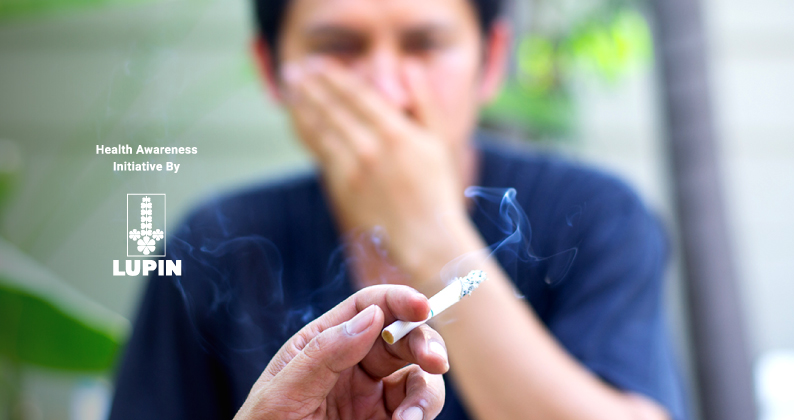The Dangers Of Passive Smoking In Public Places
By Dr. Nikita Toshi +2 more

Get,

to manage your symptom
Get your,


4 Cr+ families
benefitted

OTP sent to 9988776655



You’ve successfully subscribed to receive
doctor-approved tips on
Whatsapp

Get ready to feel your best.

Hi There,
Download the PharmEasy App now!!


Register to Avail the Offer
Send OTPBy continuing, you agree with our Privacy Policy and Terms and Conditions

Hi There,
Sign up on PharmEasy now!!
Trusted by 4 crore+ families

OTP sent to 9988776655



You have unlocked 25% off on medicines




Code: NU25
By Dr. Nikita Toshi +2 more
Table of Contents
Second-hand smoke (SHS) also called environmental tobacco smoke (ETS) is a mixture of 2 forms of smoke viz Mainstream smoke and Sidestream smoke that comes from burning tobacco. Mainstream smoke is smoke exhaled by a smoker while sidestream smoke is the smoke that arises from the lighted end of a cigarette, pipe or cigar or tobacco burning in a hookah. As compared to Mainstream smoke, sidestream smoke has higher concentrations of cancer-causing agents (carcinogens) and is more toxic. The particles are smaller in size, making them easy to enter into the lungs and the body cells.

Did you know?
Involuntary smoking or passive smoking is when non-smokers are exposed to SHS taking in the same amount of nicotine and toxic chemicals as smokers. The more SHS you breathe, the higher the levels of these harmful chemicals in your body.
Second-hand smoke can be very harmful. With more than 7000 toxic chemicals, Second-hand smoke is known to cause cancer in non-smokers. There are various disadvantages of smoking in public places and second-hand smoke. It also affects the heart and blood vessels, by increasing the risk of heart attack and stroke. Some studies have linked Second-hand Smoke to mental and emotional changes, too. Some studies have shown that exposure to Second-hand Smoke is linked to symptoms of depression. Children are at a higher risk of exposure to second-hand smoke, most of which comes from parents and other adults smoking at home. These children tend to get sick more often, are at a higher risk of developing lung infections (like bronchitis and pneumonia) and are more likely to have recurrent episodes of cough, wheezing and shortness of breath. Second-hand smoke is also knownto trigger asthma episodes, along with the worsening of symptoms as well as cause new cases of asthma in children who previously didn’t have any symptoms. All these problems may seem small at first, but one cannot neglect with bigger ones associated with them. These would include the expenses incurred, the trips to the doctors, medicines, lost school time, parents having to stay back home to care for their sick child, let alone the discomfort the child has to go through.
Second-hand smoke is a serious health threat: According to some studies. For every 8 smokers who die from a smoking-related disease, 1 non-smoker dies from second-hand smoke exposure.
Dr. M.G. Kartheeka, MBBS, MD(Pediatrics)
Passive Smoking can affect Non-Smokers either at their workplace, in public places or at their homes.
Most adults are exposed to Second-hand smoke at their workplace. Cleaning the air and ventilating the building still falls short in preventing exposure to Second-hand smoke if people continue to smoke in the building. There should be workplace smoking restrictions.
We need to create awareness of the effects of smoking in public places. When smoking is allowed in public places like restaurants, shopping malls, public transport, parks and schools, everyone is at risk of exposure to Second-hand smoke. Hazards of smoking in public places to non-smokers are of special concern, especially when it comes to children.
We spend most of our time at home. Making our home smoke-free will protect our family, our guests and even our pets. Because of Second-hand smoke, any family member could develop health problems, children being especially sensitive to the toxins present in the smoke. Ventilation, air cleaning or separating smokers from non-smokers will not control the problem of Second-hand Smoke.
Particles from second-hand tobacco smoke can settle in dust and on surfaces and remain there long after the smoke is gone. These particles can combine with gases, for example, polycyclic aromatic hydrocarbons in the air to form cancer-causing compounds that settle onto surfaces. These compounds may be stirred up and inhaled with other house dust and may also be accidentally taken in through the mouth.
The smoke that burns off the mid to the end of a cigarette or cigar actually contains more harmful substances than the smoke inhaled by the smoker, since there is no filter through which the smoke must pass, this second-hand smoking is probably worse than if you were smoking tobacco directly.
Dr. Ashish Bajaj, M.B.B.S., M.D. in Clinical Pharmacology and Toxicology
The following suggestions may help in reducing, or even eliminating, you and your family’s exposure to second-hand smoke:
Disclaimer: The information provided here is for educational/awareness purposes only and is not intended to be a substitute for medical treatment by a healthcare professional and should not be relied upon to diagnose or treat any medical condition. The reader should consult a registered medical practitioner to determine the appropriateness of the information and before consuming any medication. PharmEasy does not provide any guarantee or warranty (express or implied) regarding the accuracy, adequacy, completeness, legality, reliability or usefulness of the information; and disclaims any liability arising thereof.
Links and product recommendations in the information provided here are advertisements of third-party products available on the website. PharmEasy does not make any representation on the accuracy or suitability of such products/services. Advertisements do not influence the editorial decisions or content. The information in this blog is subject to change without notice. The authors and administrators reserve the right to modify, add, or remove content without notification. It is your responsibility to review this disclaimer regularly for any changes.

Leave your comment...
Comments